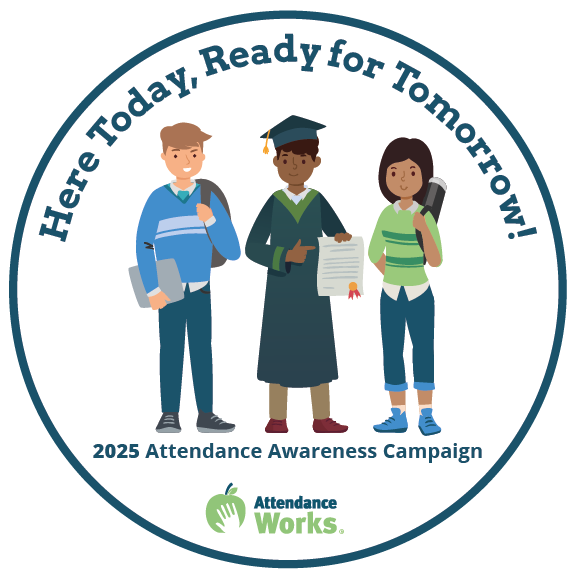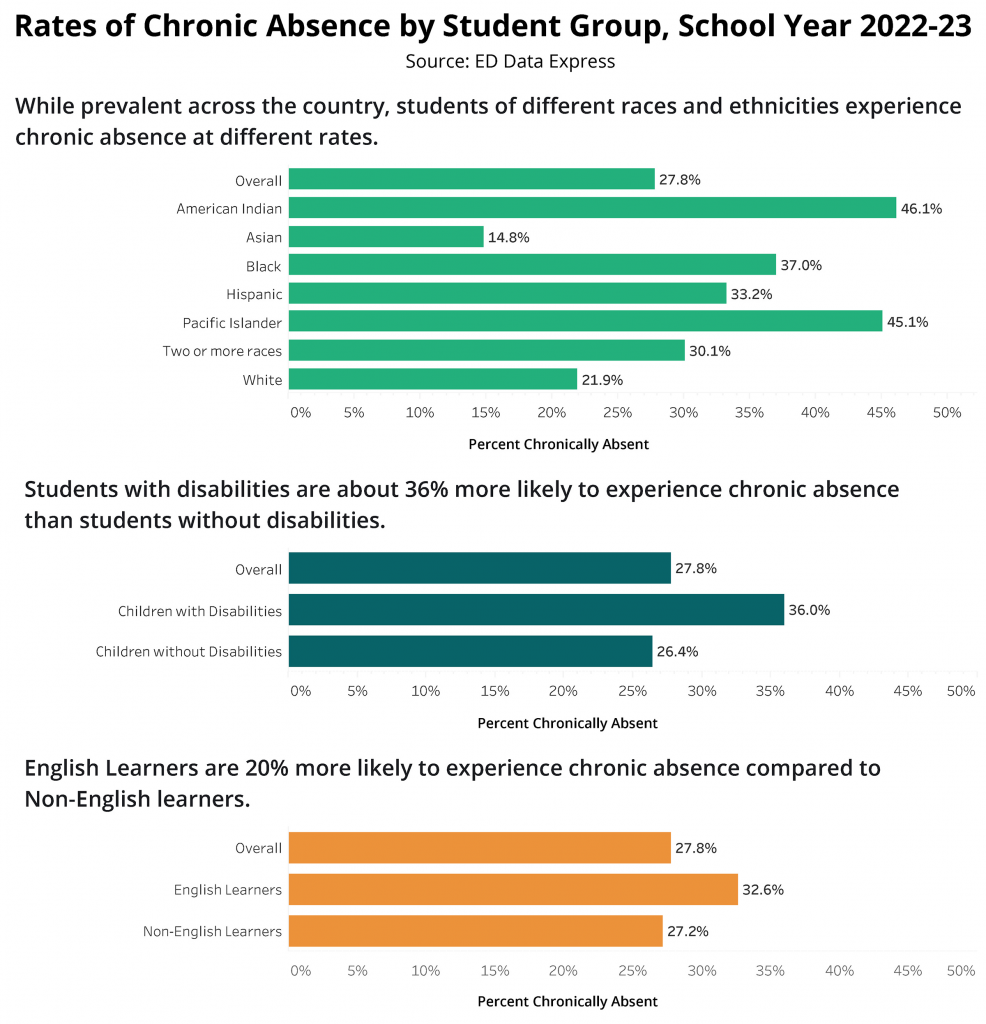Send the Message that Showing Up Matters!
Five Key Actions & Messages For Educators and Partners

Starting as early as preschool and kindergarten, regular attendance is essential for students gaining the academic and social skills they need to thrive. Research shows that when students are chronically absent, which means missing 10% or more of the school year (18 days over an entire school year), they are less likely to read proficiently by third grade, achieve in middle school, and graduate from high school.
In addition to learning losses, students also miss out on opportunities to develop socially and gain skills in problem-solving and self-regulation, all of which are needed to grow and learn.
Download a PDF of the 2025 Key Messages.
During the pandemic, national data shows chronic absence almost doubled from 8 million in 2018-19 to 14.7 million students nationwide in 2021-22. That’s one out of six to nearly one out of three students. While chronic absence has started to decrease, it is still far too high. Although absenteeism has surged among students at every economic level, some groups are more impacted than others, such as students with disabilities, who are more likely than their peers to be chronically absent.

Unfortunately, chronic absence is especially high among our youngest learners for whom attendance and engagement is especially important for developing skills that lay the foundation for long-term success. It also has grown significantly among high school students.
Failing to tackle chronic absence will undermine educational investments aimed at boosting students’ academic progress.
Improving attendance starts by working with schools, districts, and states to implement evidence-based practices, such as strategies to engage families that have a proven track record of improving attendance rates. Community-wide involvement from local businesses, religious leaders, and nonprofits, in the school’s plan to reduce chronic absence can make a huge difference. We all prosper when children and youth have the opportunity to gain skills and abilities that prepare them for success in school and an increasingly competitive workforce.
Below are key actions that schools, education leaders and community partners can use this year to raise awareness about the urgent need to partner with students and families in order to improve attendance and engagement, behavior and academic achievement.
- Embrace a problem-solving approach driven by data to improve attendance.
- Make chronic absence data public so everyone is aware of the size and scale of the attendance and engagement challenge. These data can also help guide investments from public agencies and community partners.
- Regularly review data. Identify which students have so many absences that they require early intervention, and which students need extra support and engagement.
- Adopt a tiered approach that starts with investing in positive conditions for learning for the whole school or district.
- Engage parents and guardians as vital partners.
- Recognize families as essential partners who can support student learning at home and in school.
- Communicate with students and families to understand and address the challenges they face inside or outside school that cause them to miss school and disengage.
- Clearly communicate that attending school daily matters. Families may not understand the true impact of missing just two days a month until it’s too late, or may think absences aren’t a problem unless they are unexcused.
- Promote community resources on campus for parents and families to help overcome barriers to attendance.
- Create a safe, connected and engaged learning environment.
- Foster a belief among students that if they attend they can achieve. All school staff, especially teachers, are responsible for this.
- Engage students in learning by providing supportive learning conditions with access to individualized learning and behavioral support when needed.
- Implement consistent, predictable routines to create a sense of safety.
- Cultivate relationships with students and families continuously throughout the school year.
- Support the health and well-being of students, families and school staff.
- Help students, families and staff take steps to stay physically and emotionally healthy and avoid illness.
- Expand access to school-linked and school-based health and mental health services.
- Work with health professionals to communicate with parents, caregivers and educators about when students should stay home and when to return to school after being sick.
- Invest in clean, well-ventilated school buildings.
- Involve the whole community in your strategies and tactics.
- Engage local leaders, public agencies and community organizations as essential partners for addressing barriers, such as transportation or housing and food insecurity.
- Urge health care providers to help families manage chronic illness, such as asthma and diabetes, and reinforce the importance of school attendance at children’s annual checkups.
- Encourage leaders from every sector to call for a positive, prevention-oriented approach, including participating in the national Attendance Awareness Campaign.

May 2025